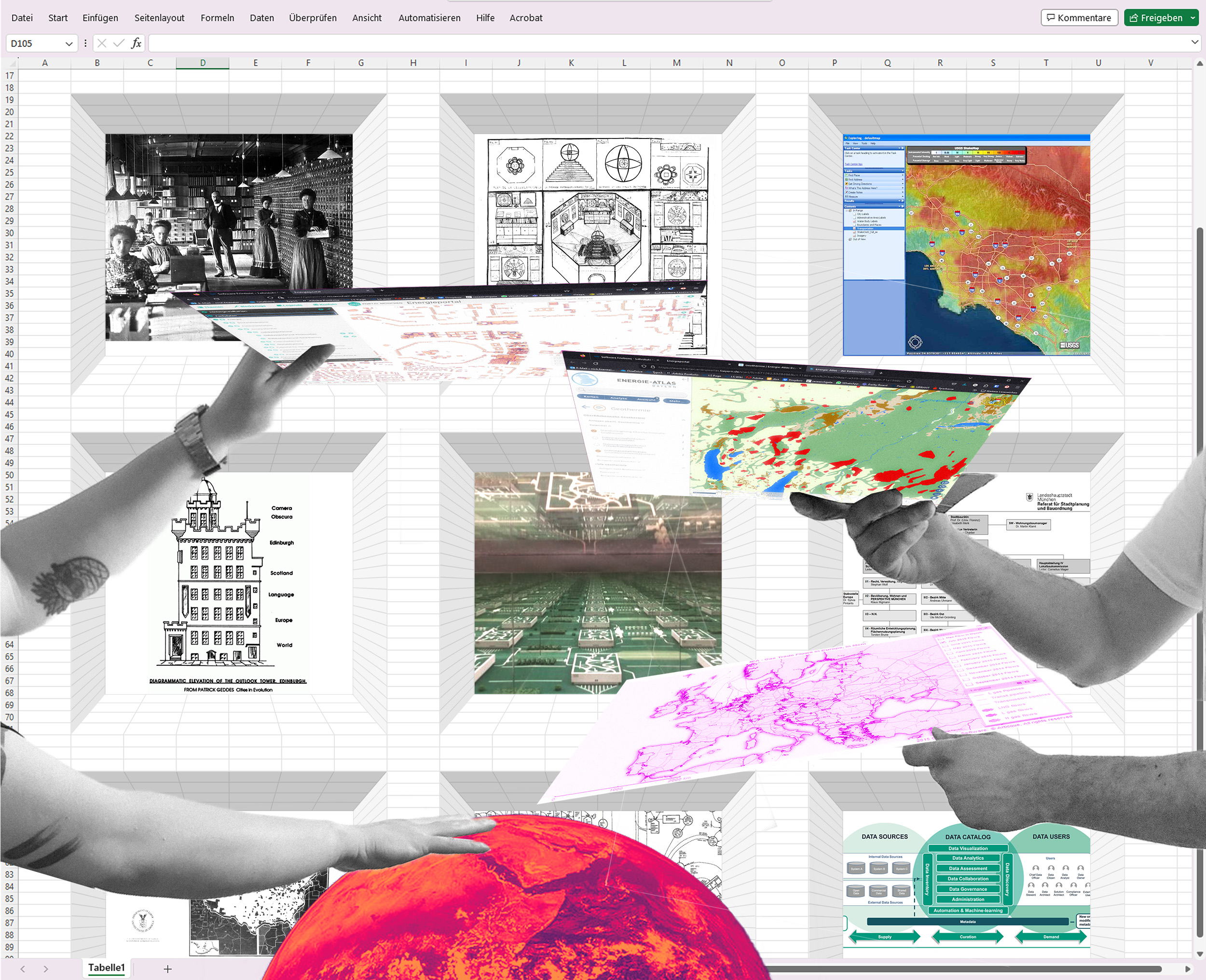Maintaining Urban Worlds Mirrored
Spezialthemen Computational Design II/ Methodology of digital design - Computational Design II
What’s a model? Models are material (sometimes silicon-based), models are reductive, models have a scale. Models are in fashion. Models open up imaginaries - from uncanny doll houses to futuristic dioramas. Models are a lot of work. Models are political, models are immersive, models invite investigation. Models are very pretty.
Also, models are a significant trend in digital urbanism.
This experimental research-by-design format relies on your model-building skills. Through this capacity, we’ll engage with Digital City Twins and 3D-Data - imaginatively but critically. During this course, model building (physical and digital) will become a collaborative, hands-on engagement with topics like Data Feminism, Critical Cartography, and the history of urban media.
Together, we’ll delve into the eclectic history and theory of urban modeling: from the first 3D-representations of Munich to Louis IVX dressed in miniature cities to today’s digital doppelgangers. On this theoretical foundation, we’ll experiment with different modeling activities - mapping spaces, translating data, and assembling a shared model.
Through self-built modeling devices, we will explore the urban area around the Sonnenstraße, shedding light on the bodily and performative dimensions of measuring, 3D-scanning, and Photogrammetry. We will synthesize and translate the gathered elements into a shared, hybrid miniature. In this process, we’ll translate point clouds into clay and cardboard (and back again). Thus, we’ll delve into the politics of modeling operations. How do we rebuild urban spaces in 3D? What information is extracted, and what is lost on the way? What invisible work hides under the 3D mesh? The answer lies between file formats, cutter knives, coordinates, and Ponal glue. The final result of this approach will be a partly physical, partly digital diorama.
